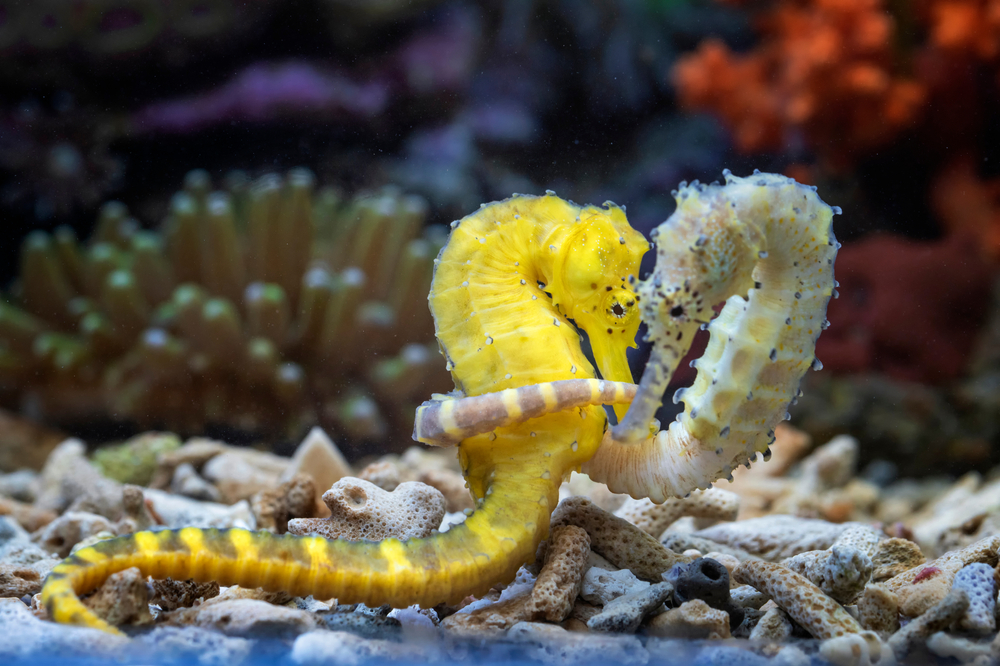
Monogamy in the animal kingdom is rare. Only 3 to 5 percent of mammals mate with the same partner for life. This is almost unheard of in the amphibian and reptile world. The birds are an exception — 90 percent of whom practice some form of monogamy. This may mean mating for one season or returning to the same partner for several years.
Which animals are partners for life?
As rare as monogamy is in the animal kingdom, it does occur. Here are five animals that mate for life and whose lifelong devotion to their mate is unique.
1. Beavers
Credit: (P Harstela/Shutterstock)
The largest rodent in North America, beavers they can grow to over 60 pounds (and four feet long) and are monogamous animals. They are well-adapted to their semi-aquatic life, with features such as webbed hind legs and a powerful, flat tail — used as a rudder when swimming and for support when gnawing trees.
Beavers mate at about three years of age, and unless one of the partners dies, they stay together for life. Both parents care for their offspring, which stay with them for two years.
These animals can be found in various bodies of water in the continental United States. Their presence actively affects the ecosystem with the dams they make made of branches and mud. Dams slow or block the flow of water, leading to the creation of new floodplains and lakes.
2. California mouse
Credit: (Sundry Photography/Shutterstock)
California mice don’t just mate for life, they take it pretty seriously. They are known to have an aggressive form of communication described as barking, according to Josh Pultorak, who studied them during his Ph.D. work on zoology.
His research it involved separating some male and female partners and pairing them with new potential partners, separating others without placing them with a new mouse of the opposite sex, and leaving some together. One week later, the mice were returned to their original partners. Some of the couples who experienced infidelity increased their barking, while the couples who lived alone returned to their normal vocalization style.
This shows that it is infidelity, not just separation, that causes the increase in aggression. When a relationship ends, either through death or the rare occurrence of abandonment, female California mice take about 10 days longer to mate with someone new than men do.
3. Sandhill Crane
Credit: (Feng Yu/Shutterstock)
In early spring, Sandhill cranes start partnering. They are typical examples of monogamous animals. The men and women each perform a nuptial dance and make loud calls. The dance involves jumping and flapping the wings, along with occasionally throwing a stick in the air. Although the dance is most common during the breeding season, it is not the only time of year when cranes perform these maneuvers. Pairs work together to build and care for a nest, which usually contains two eggs that will be guarded by the male.
It is common for only one of the eggs to survive to hatch. From there, the chick will stay with its parents during the winter and start making its way when they are about 10 months old. In the event that one of the partners dies, sometimes the surviving partner will use the same nest with its new partner.
4. Seahorse
Credit: (Bernard S Tjandra/Shutterstock)
These unusual looking fish have quite the love story. As monogamous animals, Seahorse’s courtship rituals involve harmonious swimming, with entwined tails as they synchronize their movements.
They are also known to vary between light and dark colors during courtship. Eventually, the male presents his brood pouch to the female. The pair then emerges into the water and the female transfers her eggs to the male’s pouch. From there, the “pregnant” male carries the offspring through the gestation period and gives birth to them as live births of up to 2,000 babies. This is the only known instance in the animal kingdom where a male gives birth.
During pregnancy, the pair of seahorses greet each other with a daily ritual in which they strengthen their bond by dancing together. The interesting thing is that the seahorse has no stomach in which to store food reserves, so they must feed constantly, sometimes consuming more than 3,000 brines daily. Watch the birth of a seahorse in this video.
5. Shingleback lizard
Credit: (reptiles4all/Shutterstock)
The only known case of monogamy among lizards, herps mate with the same partner every year, although there are cases where a larger male displaces a smaller one. They even earned their nickname “the faithful lizard.” Biologists aren’t quite sure exactly why these reptiles stay together.
One theory is that female lizards are better able to feed during the breeding season because the male stands nearby to protect her. This can lead to better reproductive success. Research revealed one link with herpes that lasted 27 years. Scientists also found that shingleback lizards that have been in established relationships, previously mated than those recently paired.
One particular aspect of courtship in these monogamous animals is that it takes prolonged male attention to make a sleepy female receptive, so it’s possible that males who are part of an established pair may be able to go through this process more quickly .

